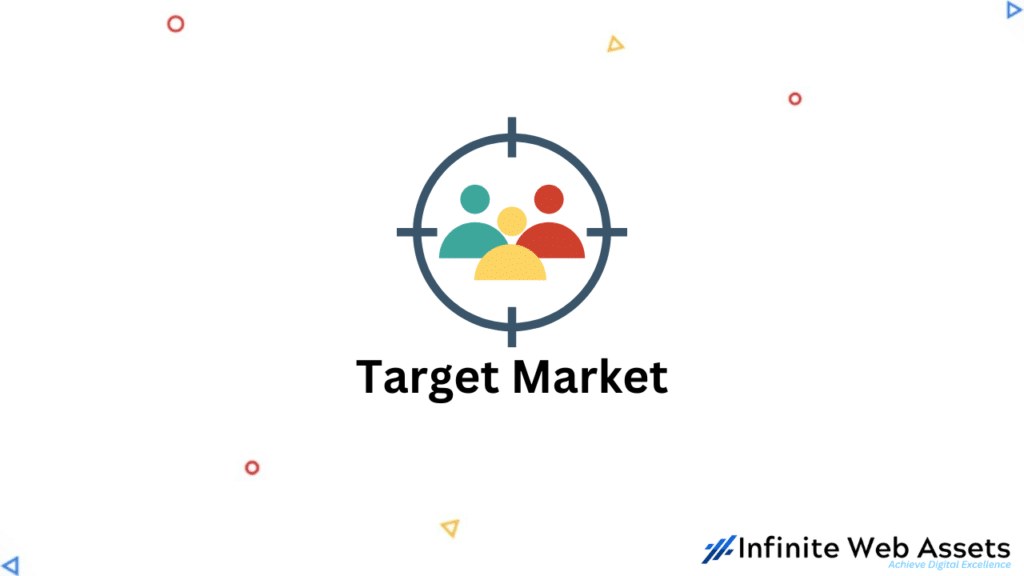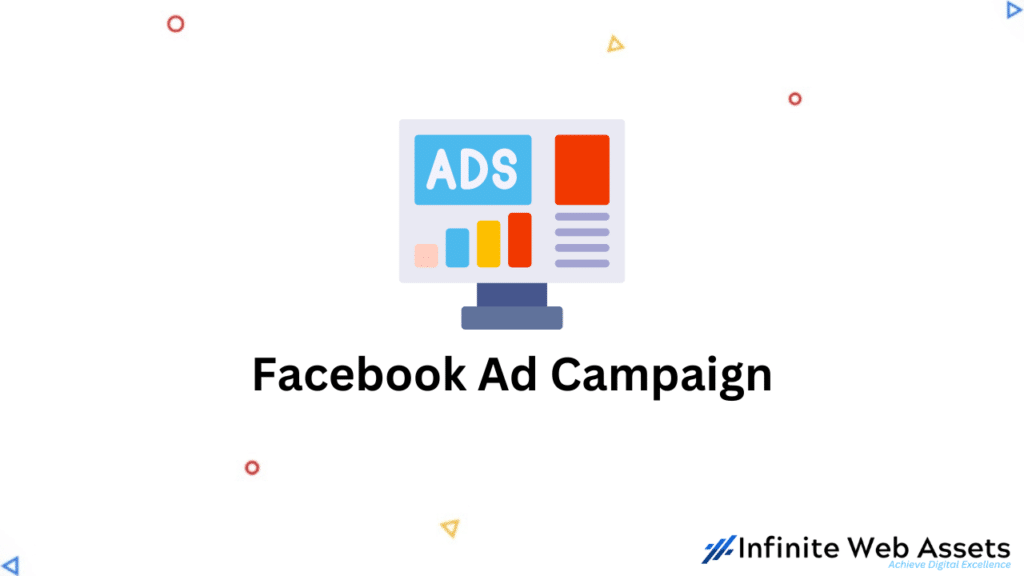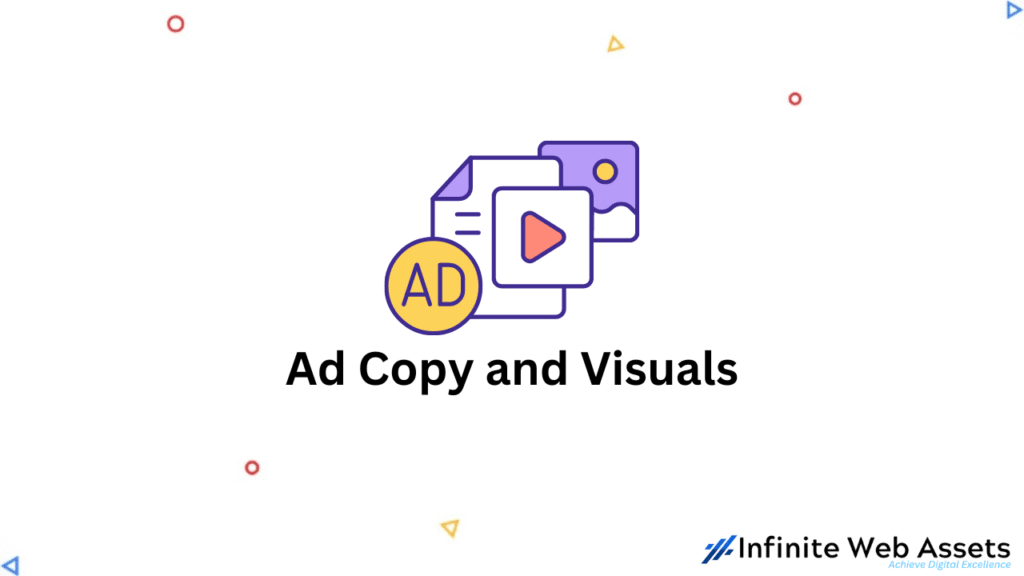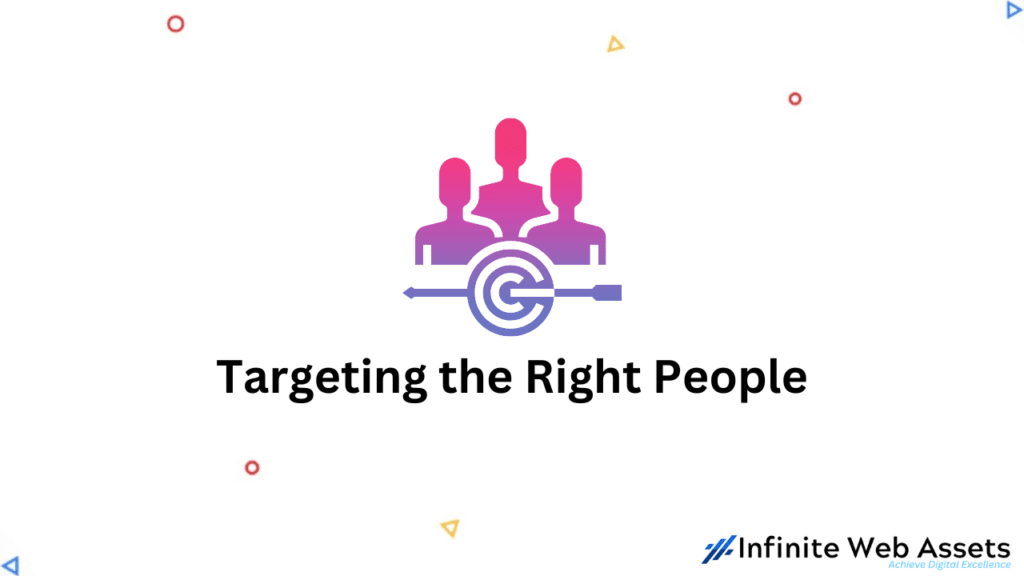Lead generation is the process of finding and building relationships with people who might buy a business’s goods or services. The goal of lead generation is to turn these potential customers into paying ones by building trust and keeping relationships strong.
Lead generation is important for businesses of all sizes because it helps find new growth and income opportunities. Businesses can make sure they have a steady stream of new customers by generating leads on a regular basis. This is important for long-term success and sustainability.
Facebook Ads is a great way to get people interested in your business. Facebook has more than 2.7 billion monthly active users, so businesses can reach a large and varied audience there. By making ads that are targeted and interesting, businesses can reach potential customers at every step of the buying process, from being aware of the product to thinking about it and making a decision. Also, Facebook’s advanced targeting options, like targeting based on demographics and interests, make it easy for businesses to reach their ideal audience and get good leads.
Unlocking the Secrets of Your Target Market

Lead generation is a key part of any successful marketing campaign. With Facebook‘s growing popularity, using its advertising platform to target specific parts of your market can lead to a big boost in leads and sales. In this article, we will talk about how important demographic information, interests, and behaviors are when making a buyer persona, and how Facebook ads can be used to reach and engage your target market.
Demographic Information
Demographic information is very important if you want to reach the right people on Facebook. By knowing the age, gender, location, level of education, income, and job of your target market, you can better target your ads to reach the right people. This information can be used to make more effective and targeted advertising campaigns and to find out what kinds of products or services your target market is interested in.
For example, if you are selling a new tech product, it might be better to go after younger people who are tech-savvy and have more money to spend than older people who might not be as interested in the newest tech. Facebook Ads gives you a full set of targeting tools that let you choose your audience based on their age, gender, location, education level, income, and more.
Interests and Behaviors
In addition to demographic information, it can be important to know what your target audience likes and how they act in order to make effective Facebook Ad campaigns. With Facebook Ads, you can reach people who are interested in things like hobbies, travel, sports, entertainment, and more. With this information, you can make ads that are more likely to reach and interest your target market because they are more specific.
For example, if you are selling a new travel product, it might be best to target people who like to travel and have a history of booking trips and going on trips often. Facebook Ads gives you a full set of tools for targeting your audience based on their interests and behaviors, such as what they have bought before, what they do online, and more.
Creating a Buyer Persona
A key part of any successful marketing campaign is making a buyer persona. A buyer persona is a made-up version of your ideal customer that is based on their demographics, interests, and behaviors. By making a buyer persona, you can learn more about your target market, which will help you make ads that are more effective and targeted.
For example, if your target market is young, tech-savvy, and interested in travel, you can make a buyer persona that represents this part of your market. Then, you can use this buyer persona to guide your ad campaigns, which will help you reach and engage your target market better. Facebook Ads gives you a full set of tools for targeting your audience based on your buyer persona, which includes demographic information, interests, and behaviors.
Setting Up Your Facebook Ad Campaign

With more than 2.7 billion active users every month, Facebook is one of the biggest social media sites in the world. Because of this, it is a great way for businesses to reach their target audience and get the word out about their products or services. In this article, we will talk about how to set up a Facebook ad campaign, including how to choose the right ad format, decide what your campaign’s goal is, set a budget and bid amount, and more.
Choosing the Right Ad Format
Facebook has many different types of ads, such as:
- Image ads are simple ads that use a single image to promote your product or service.
- Video ads are ads that show off your product or service through video.
- Carousel ads are ads that let you show more than one picture or video in one ad.
- Collection ads are a type of ad that takes people to a full-screen page where they can look at a bunch of pictures or products.
- Slideshow ads are ads that use a series of pictures to make something that looks like a video.
- Instant Experience ads are a type of ad that opens a full-screen, interactive experience within Facebook, so users do not have to leave the app.
Each ad format has its own pros and cons, so it is important to choose the right one for your campaign. For example, image ads are great for promoting products, but video ads are better for showing what a product can do and how it can help people. Collection and Instant Experience ads are perfect for e-commerce campaigns because they let people look at products and buy them right from Facebook.
Defining your Campaign Objective
The next step in setting up your Facebook ad campaign is to decide what you want to achieve with the campaign. This is what you want to get out of your ad campaign, like more people knowing about your brand, more people visiting your website, or more sales. Facebook lets you choose from a number of different campaign goals, such as:
- Awareness: Get as many people as possible to know about your brand.
- Consider: Get more people to visit your website, get people to download your app, or get more people to interact with your content.
- Conversion: Get people to buy something, sign up for a service, or buy more.
- Engagement: Get more people to like, comment on, and share your content.
Choosing the right campaign goal will affect how your ad is sent out and how well it works. For instance, if you want to get more people to visit your website, Facebook will show your ad to people who are more likely to click on it. If you want to make more sales, Facebook will show your ad to people who are more likely to buy.
Setting a Budget and Bid Amount
Set a budget and bid amount. This is the last step in setting up your Facebook ad campaign. Your budget is the amount you want to spend on your ad campaign, and your bid is the most you are willing to pay for a single ad impression.
Facebook has different budget options, like a daily budget that lets you set a maximum amount you are willing to spend each day and a lifetime budget that lets you set a maximum amount you are willing to spend on your ad campaign as a whole.
When deciding how much to bid, it is important to think about the goal of your campaign and who you want to reach. If your goal is to get more people to know about your brand, you might want to set a lower bid amount because you just want to reach as many people as possible. If your goal is to get people to buy, you may want to set a higher bid because you are going after a smaller, more interested audience.
Crafting Compelling Ad Copy and Visuals

The headline is the most important part of your Facebook ad because it is the first thing people will see. It is the first thing people will notice about your brand, and it is what will make them keep reading your ad or just scroll past it. Your headline should be easy to understand, to the point, and catchy. Here are some tips on how to write catchy headlines:
- Keep it short and sweet: A headline that is too long will be hard to read and likely will not catch the attention of people who might buy your product. A headline should not have more than 20 words.
- Use strong, actionable words: “Limited time,” “limited stock,” “act now,” “get,” and “limited offer” are all strong, actionable words you can use in your headline to make people feel like they need to act quickly.
- Make it relevant: Your headline should be about the people you want to reach and the product or service you are trying to sell.
- Use a question: In your headline, asking a question is a great way to get people’s attention. For instance, “Are you tired of X?” is a great way to get people to stop and think about your product or service.
Using High-Quality Images and Videos
The way your Facebook ad looks is just as important as what it says. People are drawn to high-quality pictures and videos, and if your ad has a strong visual element, people are more likely to remember it. Here are some ways to make sure your Facebook ad has high-quality pictures and videos:
- Use eye-catching visuals: Use images or videos that are bright, colorful, and catchy to get people’s attention. This will help your ad stand out and make it more likely that people will remember it.
- Keep it simple: Do not put too many pictures or videos in your ad. Use only one or two powerful images that will make a big impression.
- Use high-quality pictures and videos: Make sure the pictures and videos you use in your ad are of the best quality. This will make your ad look more professional and help people take your brand more seriously.
Creating a Sense of Urgency
A great way to get people to act on your Facebook ad is to make them feel like time is running out. By making people feel like they need to act quickly, you are letting them know that they only have a short time to take advantage of your offer, which can make them more likely to do so. Here are some ways to make people feel like time is running out:
- Use a countdown timer: A countdown timer in your ad lets people know that they only have a certain amount of time to take advantage of your offer. This can make people feel like they need to act quickly and make them more likely to do so.
- Use words that make people feel like time is running out: Words like “limited time,” “limited stock,” “act now,” “get,” and “limited offer” can make people feel like they need to act quickly.
Targeting the Right People

Targeting the right people is a key part of getting leads from Facebook Ads. By doing this, you can reach out to the right people who are more likely to be interested in your products or services and turn them into leads. Here’s how to reach the right people by using Facebook’s audience targeting options, retargeting website visitors, and testing and refining your targeting.
Using Facebook’s Audience Targeting Options
- Demographic targeting: You can target people based on their age, gender, education, job title, relationship status, and other demographic factors. This will help you reach out to the right people who are in your target audience.
- Location targeting: You can target people on Facebook based on where they are, which can be useful if you want to reach people in certain countries, regions, or cities.
- Interest targeting: You can target people based on their interests, like sports, travel, and other things. Facebook looks at how people use Facebook and Instagram to figure out what interests your target audience might have.
- Behavior targeting: You can target people based on their online and offline behaviors, such as the type of devices they use, their purchase history, and other relevant behaviors.
Re-targeting Website Visitors
Retargeting is a great way to get in touch with people who have already done business with you. By using Facebook’s re-targeting options, you can reach people who have been to your website, interacted with your Facebook page, or interacted with your content on Facebook.
- Website re-targeting: You can keep track of people who visit your website with Facebook’s pixel and show them ads based on what they do on your site. For example, you can show ads to people who have looked at a certain product page on your website or who put items in their shopping cart but then left without buying them.
- Page re-targeting: You can reach out to people who have liked your Facebook page, commented on your posts, or interacted with your content in other ways.
Testing and Refining your Targeting
To make sure your Facebook Ads lead generation campaign works, it is important to test and tweak your targeting. Here are some ways you can test your targeting and make it better:
- A/B testing: By making two versions of your ad and comparing the results, you can test different ways to reach your audience. This will help you figure out which options for targeting work best for your business.
- Refining your audience: As you learn more about your target audience, you can tweak your targeting to make sure you are reaching the right people. For example, if you are targeting people based on their interests, you can add or remove interests based on how your campaigns go.
- Monitoring performance: Keeping an eye on how well your Facebook Ads lead generation campaigns are doing will help you find ways to make them better. You can use Facebook’s Ads Manager to see which ads are doing well and adjust your targeting based on the results.
Wrapping Up
As a business owner or marketer, you may be looking for ways to get leads from Facebook Ads. Facebook’s advertising platform gives you many ways to reach your target audience and get leads. Here are some of the most common questions our clients have asked us about using Facebook Ads to generate leads:
What are the best ad formats for lead generation on Facebook?
Some of the best types of Facebook ads for generating leads are:
- Lead Generation Ads: These are Facebook’s own way of getting leads, and they let you get information from potential customers right on Facebook.
- With carousel ads, you can show off more than one product or service in one ad and include a lead form.
- Video ads are a great way to tell a story and get people interested in what you have to say. A lead form can also be part of them.
How do I measure the success of my Facebook lead generation campaign?
To figure out how well your Facebook campaign to get leads is doing, you can keep track of things like:
- Conversion rate is the number of leads that come from an ad divided by the number of times the ad is seen.
- Cost per lead (CPL) is how much you spent on the campaign divided by how many leads it brought in.
- Lead quality: Look at things like demographics, interests, and behaviors to figure out how good the leads are.
What are the best practices for creating a Facebook lead form for lead generation?
The best ways to create a Facebook lead form for generating leads are:
- Keeping the form short and simple: You should only ask for the information you need to follow up on the lead.
- Adding a nice look to the form: Use images, colors, and design elements that fit with your brand.
- Use language that speaks directly to the user and makes them feel like they are important.
- Offering an incentive: If you want people to fill out the form, think about giving them something in return, like a discount or a free trial.
Can I use Facebook lead generation ads to collect data from customers?
Yes, Facebook ads that generate leads can be used to get customer information. You can use the lead form to ask for information like a person’s name, email address, phone number, and other relevant information.
How can I optimize my Facebook lead generation ad for maximum conversions?
To get the most out of your Facebook ad for generating leads, think about the following:
- Targeting: Make sure you are going after the right people based on things like their age, gender, interests, and how they act.
- Ad copy: Write ads that are clear, interesting, and speak directly to your target audience.
- Use high-quality images or videos that grab people’s attention and get your message across well when making an ad.
- A/B testing: Try out different parts of your ad, like images, copy, and the people you want to reach, to see what works best.
What are the best practices for creating lead generation ads on Facebook?
- Find out who you want to sell to and make a buyer persona.
- Choose a call-to-action (CTA) that fits with the goals of your campaign.
- Make ads that are visually appealing and interesting, and focus on the benefits of what you are selling.
- Use lead magnets, like free trials or ebooks, to get people to give you their contact information.
- Use A/B testing to find out which ad format, audience, and message work best for your audience.
- Make sure your landing page is set up to bring in leads, with a clear and concise form and as few distractions as possible.
- Track and analyze your results often to keep making your campaigns better.
Can I run lead generation campaigns on Facebook for free?
No, usually you need an advertising budget to run lead generation campaigns on Facebook. You can set a daily budget or a budget for the whole campaign. You can also choose your target audience and where to put your ads.
How do I integrate my Facebook lead generation campaign with my other marketing efforts?
You can connect your Facebook lead generation campaign with your other marketing efforts by using tools like marketing automation platforms and customer relationship management (CRM) software. This will let you track and analyze your results and also send follow-up messages to your leads to move them further down the funnel.
What are the main benefits of using Facebook Ads for lead generation compared to other platforms?
- Facebook has one of the biggest and most varied groups of users, which makes it a great place to find leads.
- You can reach your target audience quickly and effectively with the help of the platform’s advanced targeting options.
- Lead generation ads on Facebook make it easy and quick for users to give their information without having to leave the platform.
- Facebook also gives you a lot of information about your audience and how well your campaigns are doing. This lets you keep optimizing and improving your campaigns.
How can I ensure my Facebook lead generation ad is compliant with data privacy regulations?
- You need a privacy policy that is clear and easy to understand, and you need to make sure that users know how their information will be used and shared.
- Before getting information from users, you must get their explicit permission.
- You must also take steps to store and protect user data, and you must be clear about how and why you collect and use data.
- It is also important to know about the latest privacy laws, like the General Data Protection Regulation (GDPR) and the California Consumer Privacy Act (CCPA).

